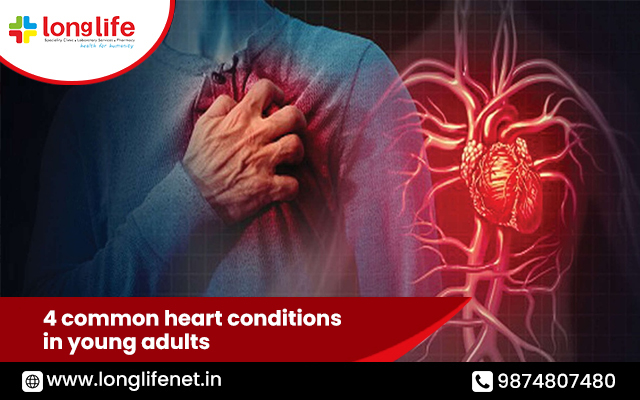Introduction
Cardiovascular diseases (CVD) are usually caused by the build-up of fatty deposits in arteries and escalate the chance of blood clots. It is also linked to artery damage in organs like the brain, kidneys, eyes and heart. In this blog, we will discuss the four different types of cardiovascular diseases, namely – coronary heart disease, strokes and TIA’s, peripheral arterial disease and aortic disease. Get the best treatment for your heart from the top cardiologists in Mukundapur.
The four types of CVD affecting young adults –
Coronary heart disease
The blockage or reduction in the flow of oxygen-rich blood to the heart muscle leads to coronary heart disease. This results in excessive strain on the heart, further leading to the following –
- Angina – pain in the chest due to a restriction in blood flowing to the heart muscle.
- Heart attack – a sudden blockage in the flow of blood to the heart muscle.
- Heart failure – the heart loses the ability to pump blood to other body parts.
TIA’s and strokes
When the blood supply to the brain is cut off, it causes damage and could be fatal; this is known as a stroke. Similarly, TIAs or mini-strokes are caused due to a temporary disruption in the blood flowing to the brain which can also lead to an increased risk of heart attack.
Symptoms of strokes or TIAs are the following –
Face – The person’s face or eye droops to one side.
Arms – Numbness or weakness of arms
Speech – Slurred speech as well as difficulty in comprehension
Peripheral arterial disease
A blockage in blood circulation from the heart to the legs causes peripheral heart disease. This results in the following –
- Leg pain, which increases while walking but lessens when resting
- Numbness and weakness
- Development of open sores on legs and feet
Aortic disease
A disease that affects the aorta is known as Aortic disease. Aortic aneurysm is a prevalent aortic disease due to a weakened or bulging aorta.
CVD causes
What causes CVD is unclear, but there are specific risk factors that can be identified. The increase in risk factors means an increase in CVD development. Below, the best cardiac surgeon in Mukundapur has mentioned them.
- High blood pressure equals damaged blood vessels.
- Nowadays, young people indulge in smoking which also increases their chances of developing heart disease.
- Consumption of fast food rich in cholesterols leads to blood vessel narrowing and blood clot development.
- If blood sugar levels are above normal, it damages blood vessels and causes diabetes. Overweight or obese people are also prone to CVD.
Conclusion
Stay safe and healthy by avoiding the risk factors that lead to CVD. The best cardiologists in Mukundapur can tend to your health-related problems and ensure successful results. Moreover, maintaining your weight, exercising, avoiding alcohol and getting regular health check-ups will help keep these heart problems at bay.

